
Oklahoma Senator Jim Inhofe
U.S. Sen. Jim Inhofe (R-Okla.), senior member of the Senate Armed Services Committee (SASC) and chairman of the SASC Subcommittee on Readiness and Management Support, voted Wednesday to advance the National Defense Authorization Act (NDAA) for fiscal year 2018 (FY18). The legislation passed out of SASC by unanimous vote (27–0) and is expected to be considered on the Senate floor in July.
FY18 NDAA authorizes $640 billion in funding for the Department of Defense (DOD) and national security programs of the Department of Energy, a $39 billion increase over the president’s budget request, and an additional $60 billion for Overseas Contingency Operations.
“Our military readiness is at an all-time low, reminiscent of the ‘hollow force’ of the 1970s and the Carter administration. Our modernization has not kept pace with requirements or our adversaries, our military infrastructure is crumbling from a lack of investment and our force size is inadequate to meet growing worldwide threats. It is Congress’ constitutional responsibility to provide for our national defense and ensure we provide the best equipment and training to the men and women in uniform who protect our nation and its interests,” Inhofe said. “This year’s NDAA chips away at this decline and builds on President Trump’s earlier efforts to rebuild our military by providing critical funding and improving the combat readiness of our military.
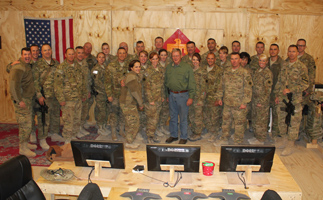
Sen. Inhofe with Oklahoma’s Army National Guard
“This bill increases our end strength and boosts funding for equipment, operations, maintenance, military construction and includes a 2.1 percent pay increase for our troops. It also addresses many requirements for the Services and Combatant Commander’s unfunded priority lists. Most importantly, this bill includes provisions directly affecting Oklahoma’s military, communities, businesses and universities. It includes extended authority for direct hiring at our depots and plants; the production of the Paladin Integrated Management program and KC-46A; AWACS modernization; full funding for Impact Aid; funding for DOD youth outreach program STARBASE; and supports continued collaboration and research at our the state’s universities.
“I am also pleased this NDAA prohibits a Base Realignment and Closure (BRAC) round this year. We are facing greater threats from across the globe than I have seen in my life time. The NDAA’s first priority must be to rebuild our force and improve its readiness. A BRAC round would divert vast resources away from this end for savings that we would not see for several decades. Now is not the time for BRAC.
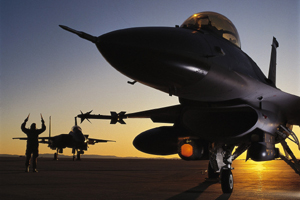 “However, I have concerns with several provisions included in this bill that I intend to address when the legislation is considered on the Senate floor. FY18 NDAA should prohibit the transfer of Guantanamo Bay detainees to the United States for medical treatment, require public notification prior to the transfer of Gitmo detainees and authorize the direct hiring of uniquely qualified personnel at our depots, plants, shipyards and arsenals.”
“However, I have concerns with several provisions included in this bill that I intend to address when the legislation is considered on the Senate floor. FY18 NDAA should prohibit the transfer of Guantanamo Bay detainees to the United States for medical treatment, require public notification prior to the transfer of Gitmo detainees and authorize the direct hiring of uniquely qualified personnel at our depots, plants, shipyards and arsenals.”
Inhofe Provisions included in FY18 NDAA:
Oklahoma Provisions
Civilian Hiring
Inhofe authored language that extends civilian hiring authority for depots, shipyards, plants and arsenals for two years, through fiscal year 2019, due to the Office of Personnel Management failure to implement the law requiring direct hiring authority in the FY17 NDAA. Our depots and plants play a critical role in overall military readiness. Our military, and specifically our depots, are suffering from a shortage of civilian skilled workers. This workforce is the backbone of the sustainment and combat capability of our entire military—every service and every weapon system. This workforce maintains aging equipment, adopts new technologies and is consistently recognized by industry as the benchmark of success. Because of its abilities, the workload demands continue to grow along with the need for higher levels of technological skill sets. Our ability to recruit and hire this workforce is affected by an ineffective and inefficient hiring system. This provision will help maintain and grow the workforce at Tinker Air Force Base and the McAlester Army Ammunition Plant.
Organic depot capacity and interoperability
Inhofe supported language expanding cross-service depot maintenance operations to avoid future backlogs of workloads as currently is the case with the F/A-18 Hornet A-D legacy aircraft. The maintenance backlogs that presently exist in certain weapon systems sustained by the organic industrial base is affecting overall readiness. By expanding cross¬ service depot maintenance within the organic industrial base and sharing best practices, DOD can achieve greater efficiencies and cost savings across all weapon systems.
Department of Defense Siting Clearinghouse
Inhofe helped author language in that improves DOD’s procedures for reviewing potential national security implications of future energy projects. With many energy projects planned in the near future, we must prevent encroachment on military installations, aerial military training routes, airports, drop zones, and ranges that are vital to the important military training for which Oklahoma is famous. Inhofe also recognizes the importance of energy projects and development rights for landowners in the state, so the NDAA language directs DOD to work with energy developers to mitigate potential impacts on military readiness. Furthermore, the language includes a provision to include state governors in the review process to ensure states have a voice. This bill language makes great strides forward in ensuring our military maintains its combat readiness and protecting the quality of military training that has made Oklahoma an indispensable asset to our military and our overall national security.
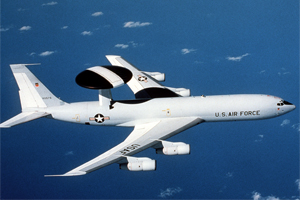 E-3 Airborne Warning and Control System (AWACS)
E-3 Airborne Warning and Control System (AWACS)
Inhofe authored language to upgrade the fleet of E-3 Airborne Warning and Control System (AWACS) to the new Block 40/45 configuration. AWACS mission has been in constant demand, supporting overseas contingency operations as well as supporting homeland defense. AWACS fleet, based entirely at Tinker Air Force Base, entered the service in the late 1970s and require multiple upgrades to the avionics and mission control equipment in order to meet current and future threats.
Air Force Low Density/High Demand (LD/HD) Assets
Inhofe authored language that recommends the Secretary of the Air Force ensure replacement assets are in production before retirement of any Low Density/High Demand (LD/ HD) assets. LD/HD assets are force elements consisting of major platforms, weapons systems, units and/or personnel that possess unique mission capabilities and are in continual high demand to support worldwide joint military operations. Air Force LD/HD assets are required by Combatant Commanders around the globe during contingency operations and include both the Joint Surveillance Target Attack Radar System (JSTARS) and Airborne Early Warning and Control System (AWACS). Currently, the Air Force does not possess enough of these aircraft to meet wartime requirements, driving higher required mission capability rates and a high operations tempo due to the constant demand in support of contingency operations around the globe.
Paladin Integrated Management (PIM)
Inhofe authored language that ensures continued support for the Paladin Integrated Management (PIM) upgrade to the M109A6 Paladin, the primary indirect fire weapons platform in the U.S. Army’s Armored Brigade Combat Teams (ABCT). It also called for the Secretary of the Army to prioritize and expedite PIM Operational Test & Evaluation (OT&E) to include immediate tasking of a crew with required expertise to execute the OT&E. The PIM program is critical to the US.. Army’s ABCT construct. It will be assembled in Elgin and operated on Fort Sill. The PIM program significantly improves force protection and survivability and reduces logistics burden for the ABCT field artillery Soldiers. The NDAA authorizes full funding at $646.4 million to acquire 59 new PIMs.
 Counter Unmanned Aerial Systems (UAS) Capabilities
Counter Unmanned Aerial Systems (UAS) Capabilities
Inhofe authored language that encourages military services continue their efforts to develop, procure and deploy directed energy counter-Unmanned Aerial Systems (UAS) capabilities. Potential adversaries to the United States continue to procure low-cost UAS and arm them for military purposes in conflict areas like Iraq and Syria. The United States must meet this threat by expanding its capability to protect military personnel, military installations and critical infrastructure. UAS threats will only increase overseas and domestically and additional resources are necessary to meet Joint Urgent Operational Needs Statements. High-energy laser and high-powered microwave weapon systems offer a game-changing capability that augments existing kinetic solutions and can also help break the cost curve of using expensive kinetic weapons and interceptors against low-cost drones. This technology has been demonstrated at recent military exercises such as a live-fire exercise at White Sands Missile Range and the U.S. Army’s Maneuver Fires Integration Exercise (MFIX) at Fort Sill and is ready to be operationalized.
B-21 Long Range Strike Bomber
Inhofe supported fully funding the B-21 program that is critical to replacing our aging fleet of bomber aircraft including the B-52 and B-1 aircraft. The B-21 will enable the United States to operate bombers in anti-access/area denial environments and will be capable of carrying both precision-guided conventional and nuclear weapons. This aircraft, once fielded, could be sustained at Tinker Air Force Base, as is the case for the B-1 and B-52.
KC-46A Procurement and Basing
Inhofe supported increased funding and procurement of two additional KC-46 aircraft bringing the total FY18 procurement to 17 KC-46 aircraft. The KC-46 tankers ensure our military’s ability to engage in operations around the globe. Altus Air Force Base is programmed to receive 8 KC-46 aircraft and will receive $4.9 million in military construction funds to complete the KC-46 Fuselage Trainer Facility. Tinker Air Force Base has been selected to provide all depot maintenance for the KC-46 with construction underway for a KC–46A Depot System Fuel Laboratory as well as taxiways and ramp space to support KC-46 depot maintenance.
Other Military Construction Projects for Oklahoma
Inhofe supported authorization of $28.9 million for military construction in Oklahoma. In addition to the $4.9 million Altus Air Force Base will receive for phase two of its KC-46 Fuselage Trainer facility, Altus will receive $16 million to replace its aging fire station. The Oklahoma Air National Guard will receive $8 million to construct a small arms range at Tulsa International Airport.
Intelligence Community Centers of Academic Excellence
Inhofe authored language that would increase capacity and capabilities of the Intelligence Community Centers of Academic Excellence (ICCAE), with a focus on data sciences, machine learning, artificial intelligence, modeling and war gaming and intelligence integration. This will help to expand ICCAEs like the University of Oklahoma’s Center for Intelligence and National Security in Norman. ICCAE programs provide significant opportunities for STEM and critical language skills for students who have unique skill sets along with enrichment experiences required to develop the next generation of scientists, engineers, mathematicians and linguists necessary to ensure the nation’s security.
Impact Aid
Inhofe was again successful in including language that authorizes $25 million in supplemental Impact Aid to local educational agencies and schools with military dependent children as well as an additional $10 million in Impact Aid for schools with military dependent children with severe disabilities, a $5 million increase from last year.
F-16 Block 40/50 Mission Training Centers (MTC)
Inhofe authored language that directs the Secretary of the Air Force to accelerate procurement of additional F-16 Mission Training Centers (MTC) suites for Air National Guard. These MTCs provide continuity of training between live and virtual scenarios, develop and maintain required combat readiness without dependence on the availability of off-station resources, reduce flight ops tempo and flying hour cost required to gain equal training readiness, reduce travel cost, reduce personnel tempo impacts for pilots, and increase dwell time for wings, thus allowing more deployment flexibility. Additional MTCs would save travel costs and make the F-16 block 40/50 MTC more available to active duty, reserve and Air National Guard F-16 block 40/50 pilots, resulting in enhanced readiness.
 Cyber Security
Cyber Security
The rapidly developing cyber space threat requires a cogent, comprehensive whole of government strategy to protect our national security and interests. To that end, Inhofe supported language requiring an overall increase in spending for cybersecurity. He also supported language to establish a comprehensive cyberspace, cybersecurity and cyberwarfare policy. Inhofe further supported language establishing U.S. Cyber Command as a unified combatant command, reflecting the importance of cybersecurity to our national defense. Recognizing the critical importance of government partnership with academic institutions, Inhofe supported language that specifically calls for cooperation with academic cyber centers of excellence, like the University of Tulsa (TU).
Career and Technical Education (CTE)
Inhofe authored a provision requiring DOD to offer information to service members during their transition out of service on the benefits of career and technical education (CTE) programs. CTEs are renowned for providing job training for technical careers like welding, mechanics, and cosmetology. This builds on Inhofe’s legislation, S. 1356 Improving Veterans Education Act, which reinstates veterans’ eligibility under the Post-9/11 Veterans Education Assistance Improvements Act of 2010 for education benefits when attaining postsecondary career and technical education programs. In Oklahoma this would give veterans access to over 200 additional educational programs.
STARBASE
Inhofe supported language that reauthorizes the STARBASE program for FY18. The purpose of STARBASE is to improve the knowledge and skills of students in kindergarten through 12th grade in STEM subjects and motivate them to explore these subjects as they continue their education. STARBASE currently operates at 76 locations in 40 states and the District of Columbia and Puerto Rico, primarily on military installations. To date, nearly 750,000 students have participated in the program. STARBASE is a highly effective program run by our dedicated service members and strengthens the relationships between the military, communities and local school districts. The Oklahoma Air National Guard runs the state’s STARBASE program out of two locations, the Will Rogers Air National Guard Base and the Tulsa Air National Guard Base, with over 4,500 students participating every year.
Implementation of Direct Hiring Authorities for Military Spouses
Inhofe supported language that directs the Secretary of Defense to submit a report outlining DOD’s progress on the implementation of direct hiring authorities for military spouses no later than Dec. 1, 2017. In recent years, Congress has provided direct hiring authorities to assist military spouses in obtaining employment with the federal government. Despite authorization for special hiring authorities for military spouses, these authorities are not sufficiently utilized and military family groups have received feedback that spouses still face great difficulty in navigating the federal hiring process in a timely manner and obtaining employment.
Directed Energy Weapons
Inhofe again supported language calling for advancements in directed energy weapon system prototyping and demonstration. Numerous reports and studies have highlighted the game-changing potential of directed energy weapons—both in offensive and defensive capacities. Recent tests and demonstrations, including counter-UAS live fire events at Fort Sill, have shown the promise of this emerging technology. Inhofe supported increased funding for applied research in directed energy technology and language to reduce burdensome bureaucratic obstacles that limit the use of directed energy weapons in testing and combat. These Inhofe-supported provisions will speed the process of arming our warfighters with this cutting edge and transformational technology.
Civil Air Patrol
Inhofe supported legislation that provides $26.7 million to fully fund the Civil Air Patrol operation for FY18. Civil Air Patrol is a congressionally chartered, nonprofit corporation serving as official auxiliary of the Air Force and continues to play an important role in Oklahoma. With operating locations in Tulsa, Oklahoma City, Lawton, Norman and Muskogee, volunteers perform emergency and disaster relief operations, aerospace, counter-drug and homeland security and courier service missions. This funding will provide for crucial aircraft and national communications upgrades.
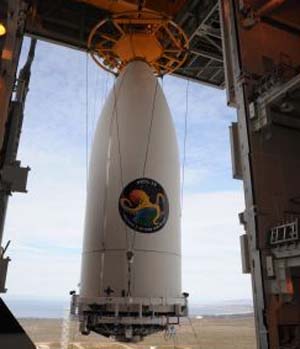
In preparation for launch, the NROL-39 payload is transported and mated to its Atlas V booster at Vandenberg’s Space Launch Complex-3. (ULA)
FAA Licensed Spaceports
Inhofe supported a key amendment that recognizes the unique importance of U.S. FAA licensed spaceports and when appropriate, encourages the use of such spaceports and launch and range complexes for mid- to low-inclination orbits or polar high-inclination orbits in support of national security space priorities. These federally-licensed launch facilities—including Oklahoma Air and Space Port—are available to meet the requirements for the national security space program from DOD, Air Force Space Command, Operationally Responsive Space Office, and Missile Defense Agency. The Oklahoma Air and Space Port, near Burns Flat, Oklahoma, is the only space port in the United States to have a civilian FAA approved Space Flight Corridor in the National Airspace System. This space flight corridor is unique because it is not within military operating areas or within restricted airspace, which provides an operational capability for space launch operations and associated industries specialized in space¬ related activities. The spaceports improve the resiliency of U.S. launch infrastructure and help ensure consistent access to space to support national security space priorities.
Acquisition of New Technologies for Explosive Ordnance Disposal (EOD) Units
Inhofe authored language that gives DOD Explosive Ordnance Disposal (EOD) units more flexibility to acquire, field and utilize emerging technologies that will save lives and meet mission requirements. The current EOD table of allowance does not always meet the critical requirements faced by our servicemen and women because of a delay in the updating of these tables. This amendment allows EOD units the authority to acquire new technology not currently listed on the table of allowance.
Energy Savings Performance Contracts (ESPC) assessment
Inhofe authored language that directs the Secretary of Defense to provide an assessment on the use of energy savings performance contracts (ESPCs) for savings from training improvements, such as fuel savings. The assessment will identify include identification of potential savings that could be achieved through improvements to training, using those savings as part of a long term ESPC, and authorities needed if a decision was made to use savings as part of additional ESPC.
Foreign Language Training
Inhofe supported language that encourages DOD to continue placing a high priority on foreign language proficiency programs to ensure warfighters and national security professionals receive the language and culture training needed to complete their missions effectively, including partnerships with K-12 schools, as well as universities.
National Provisions
BRAC
Inhofe supported language that makes clear that a future Base Realignment and Closure (BRAC) round is not authorized. Under the Obama administration, the United States force capability was reduced to an unacceptable level and a BRAC round would further reduce this capacity. Reported excess military infrastructure assumes a smaller force structure that fails to account for global threats that are the greatest they’ve been in decades. Inhofe believes the first priority of the NDAA must be rebuilding the force and its readiness. A BRAC round, which requires upfront funding, would divert resources away from this end. The announcement of a BRAC round would also negatively impact all military communities due to uncertainty of the future of each base and cost the taxpayer billions for savings that will not be realized for another 20 years.
Global Force Posture Assessment
Inhofe supported language that requires the Secretary of Defense to conduct an assessment of global force posture of the armed forces. Inhofe has repeatedly expressed concern that the U.S. shortsightedly withdrew American military forces from around the world—particularly in Europe. Current global threats underscore the importance of forward-based U.S. military forces and capabilities, especially considering advancing capabilities of peer and near-peer threats. These adversaries are increasingly capable of threatening our air and sea lines of communication, and denying our forces of access to important terrain. Inhofe expects DOD to assess and recommend the appropriate ratio of U.S.-based to forward-based forces, and apply that mix in conjunction with end-strength growth to respond to increased threats around the world.
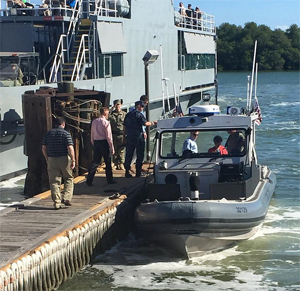
Sen. James Lankford on tour of Guantanamo Bay
Naval Station at Guantanamo Bay, Cuba
Inhofe supported language that extends the prohibition on the use of funds: for the closure of the U.S. Naval Station, Guantanamo Bay, Cuba (Gitmo), to construct or modify facilities in the United States to house detainees transferred from Gitmo, the transfer or release of Gitmo detainees to the United States, and the transfer or release of Gitmo detainees to Libya, Somalia, Syria and Yemen
Inhofe opposes that FY18 NDAA again authorizes the transfer Gitmo detainees to the United States temporarily for emergency or critical medical treatment and will work to remove that language as the bill advances through the legislative process.
Special Survivor Indemnity Allowance (SSIA) under the Survivor Benefit Plan (SBP)
Inhofe supported language that amends section 1450 of Title 10 of the United States Code to permanently extend the authority to pay the Special Survivor Indemnity Allowance (SSIA) under the Survivor Benefit Plan (SBP), and provides for annual inflation adjustments in the authorized amount going forward when it was set to expire. SSIA is a program for surviving spouses who are the beneficiary of the SBP annuity and their SBP annuity is partially or fully offset by the Dependency and Indemnity Compensation (DIC). SSIA also applies to the surviving spouses of members who died on active duty whose SBP annuity is partially or fully offset by their DIC.
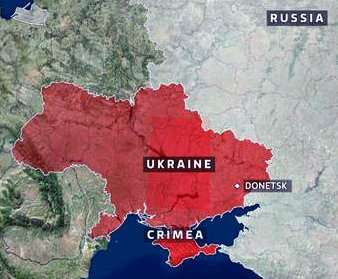 Security Assistance for Ukraine
Security Assistance for Ukraine
Inhofe, a long-time supporter of Ukraine, successfully included a provision that authorizes a $350 million increase for the Ukraine Security Assistance Initiative, totaling $500 million for FY18. The security assistance will include defensive lethal assistance and intelligence support to the country’s military and other security forces and will help to build Ukraine’s capacity to defend its territory and sovereignty. The language withholds half of the funds until the Secretary of Defense certifies that Ukraine has taken substantial action to make necessary defense reforms.
Sexual Assault
Inhofe supported language that would require a report to further prevent retaliation against survivors of sexual assault and harassment in the performance evaluation process. Professional reprisal against service members who report sexual assault or harassment undermines readiness, depresses recruitment and retention, and erodes unit cohesion. Currently, one-third of female service members who report unwanted sexual contact indicated experiencing a negative outcome they perceived to be professional reprisal. One form of professional reprisal is retaliation in performance reports.
Counter-ISIS operations
Inhofe fully supported President Trump’s aggressive counter-Islamic State of Iraq and Syria (ISIS) budget request of over $1.7 billion. Additionally Inhofe supported language that streamlined the process of assisting previously vetted Syrian opposition fighters in their fight against ISIS. Due to the diligent work of our armed forces and coalition partners ISIS lost significant territory over the last year. However, the threat from ISIS-inspired or -planned attacks persists. In 2017, ISIS attacks in Europe alone killed 39 and wounded over 100, proving that now is not the time to let up pressure.
European Deterrence Initiative
Inhofe continued to support funding for the European Deterrence Initiative that bolsters efforts to deter Russian aggression. Inhofe supported language that authorizes $4.6 billion—up $1.2 billion from FY17—to increase the capability and readiness of U.S. and NATO forces to defend territorial integrity, preserve regional stability and improve the agility and flexibility of military forces to address growing threats in the region. This includes $100 million for the Baltic nation’s joint program for resiliency and deterrence against aggression by Russia. Inhofe also supported language that requires an annual report on Russian military and security developments and adds hybrid and cyber warfare element to the report.

Smoke from rockets fired from Gaza City launched toward Israel, July 15, 2014 ( photo: AFP/ Thomas Coex/)
Missile Defense
Inhofe supported language that increases funding for missile defense. Missile defense is a strategic tool necessary to defend the United States and its allies. An avid supporter of missile defense since its beginnings under President Reagan, Inhofe continues to push and support language to improve missile defense for the United States and Israel. Inhofe supported increasing funding for the Missile Defense Agency by $631 million, which will provide for necessary modernization of the U.S. ground-based missile defense system needed to enhance homeland protection and counter the proliferation of growing long-range ballistic missile threats from North Korea, Iran and other adversaries. This increase includes the procurement of 24 additional Terminal High Altitude Area Defense (THAAD) systems.
Israel, our long-time ally, faces imminent threat from Iran. Inhofe supported increasing funding for U.S.-Israeli missile defense programs to include funding for continued development of Arrow, Arrow 3, and David’s Sling, as well as procurement of Tamir interceptors for Iron Dome.
Taiwan
Inhofe, co-chair of the Senate Taiwan Caucus, supported many provisions regarding Taiwan including a provision Inhofe authored that strengthens and enhances the strategic defense relationship between the United States and Taiwan. Inhofe also included language that would implement a program of technical assistance to support Taiwan’s growing submarine program. Another provision that Inhofe supported would extend an invitation to Taiwan to the annual joint military exercises RIMPAC and Red Flag.
Security Strategy for Great Lakes region of Africa
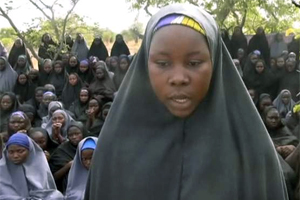
Victims of Boko Haram
Inhofe authored language that requires the Secretary of Defense to provide a strategy to address Africa’s Great Lakes sub-region that has been plagued by decades of instability and armed conflict resulting from porous borders, competition for resources, weak governance, territorial disputes and the continued growth of terrorist groups into the region. With Operation Observant Compass ending, it is imperative that DOD remains engaged in the region through continued engagement with regional security forces, sharing of intelligence and multilateral exercises to increase regional capacity to combat shared threats which includes the Lord’s Resistance Army. As such, the Secretary of Defense is directed to provide SASC a briefing on its strategy to combat security threats in the sub-region.
Commanders’ Emergency Response Program (CERP)
Inhofe supported language that extents Commanders’ Emergency Response Program (CERP) through Dec. 31, 2019. This program is a vital resource for combatant commanders around the world for conducting stability, development, and humanitarian assistance operations where Congress has specifically authorized its use.
 Electromagnetic Pulse (EMP) Threat Briefing
Electromagnetic Pulse (EMP) Threat Briefing
Inhofe authored language that directs the Secretary of Defense to provide a briefing to SASC on its assessment of the military findings and recommendations provided by the Electromagnetic Pulse (EMP) Commission. The EMP Commission was established by FY01 NDAA and was reestablished in FY06. It was charged to assess the nature and magnitude of potential high-altitude EMP threats to the United States from all potentially hostile actors, the vulnerability of United States military and civilian systems to an EMP attack, the capability of the United States to repair and recover from damage inflicted by an EMP attack and the feasibility and cost of hardening select military and civilian systems against EMP attack. Since establishment, the EMP Commission has provided multiple reports and briefing to DOD. Inhofe’s language directs the Secretary of Defense to make Congress aware of those findings and recommendations, as well as what DOD has done and plans to do in response.
Future Air-to-Ground Missile Capability
Inhofe authored language that directs the Secretary of the Air Force to provide a briefing on the current integration efforts to meet an urgent Air Force need to strike enemy armor. Currently, the Air Force lacks an air-to-ground missile that is capable to deter massed formations of enemy armor that could be encountered should the United States have to fight against a near-peer adversary in either Europe or the Asia Pacific region. The current inventory of air to ground missiles lack the ability to launch en masse from fighter aircraft against multiple moving enemy targets with the appropriate standoff in a contested integrated air defense threat area.
Low-Cost Ballistic Missile Targets
Inhofe authored language that directs Missile Defense Agency to complete an assessment that would consider the integration of low cost targets into the flight test plans for the Ballistic Missile Defense System. SASC continues to encourage the Missile Defense Agency to use threat-representative targets in its flight tests, to the maximum extent possible, in order to prove our Ballistic Missile Defense System is capable of defending against increasingly complex threat missiles. The committee is aware of potential target technologies that could provide flexibility, reduce cost, and improve schedule performance in meeting Ballistic Missile Defense System test objectives. Lower target costs that are reliable and meet mission requirements could enable Missile Defense Agency to potentially procure more targets and test more frequently.
Low Cost Unmanned Aerospace Systems Development
Inhofe submitted an amendment that focused on the development of low cost Unmanned Aerospace Systems development. With future anticipated military threats and limited funds for defense, there is a need for new and innovative solutions towards the development of future low cost unmanned aerospace systems (UAS). As manned aircraft costs continue to escalate, the need for UAS concepts that offer dramatic reductions in cost in order to bring “mass” to the engagement, and to achieve a cost imposing effect on future adversaries, has grown. UAS performance, design life, reliability and maintainability drive the cost of today’s systems, and need to be traded to achieve the optimum capability and cost effects. This concept should provide long range, runway independent launch and recovery, transonic, strike capability in remote, contested regions where forward basing is difficult or prohibited.

USS Farragut is an Arleigh Burke-class destroyer in the US Navy. She is the fifth Navy ship named for Admiral David Farragut (1801–1870).
355 Ship Build-Up Review
Inhofe supported language that requires the Secretary of the Navy to deliver a report that provides a detailed business case analysis for options to grow the battle fleet from 276 to 355 ships.
“The Future Navy” plan calls for the Navy to achieve the 355 ship objective by the 2020s. It is important that Congress fully understands the business case analysis for all options to include analyses for service life extension and reactivation options.
